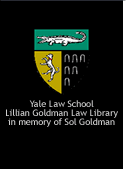
 |
 |
- produced by Jael Humphrey-Skomer and Shirin Bakhshay BIBLIOGRAPHY Guatemalan Resources Greg Grandin, The Instruction of Great Catastrophe: Truth Commissions, National History, and State Formation in Argentina, Chile, and Gautemala, 110 Am. Hist. Rev. 46 (2005), available athttp://www.historycooperative.org/journals/ahr/110.1/grandin.html This article offers an historical overview of the truth commissions in Guatemala, Argentina, and Chile, focusing on how political realities influence truth commissions’ ability to interpret the past. Guatemala was ultimately able to turn many of the weaknesses of its mandate into advantages by examining widespread practices and institutional responsibility.
Guatemala: Memory of Silence, Report of the Commission for Historical Clarification Conclusions and Recommendations, available athttp://shr.aaas.org/guatemala/ceh/report/english/toc.html This report summarizes the findings from the Guatemalan truth commission’s four-volume final report. It offers conclusions about the causes of the armed conflict, assigns institutional responsibility to perpetrators, and offers recommendations for the future.
Recovery of Historical Memory Project, The Official Report of the Human Rights Office, Archdiocese of Guatemala, Guatemala: Never Again! (1999) This report, commonly known as REHMI, was the Catholic church’s attempt to supplement the weak mandate of the national truth commission. Both commissions reached similar conclusions. Archbishop Gerardi was extra-judicially assassinated two days after the report’s release.
Andrew N. Keller, To Name or Not to Name? The Commission for Historical Clarification in Guatemala, Its Mandate, and the Decision Not to Identify Individual Perpetrators, 13 Fla. J. Int’l L. 289 (2001) This article explores the Guatemalan truth commission’s decision not to name perpetrators, emphasizing the limitations the truth commission faced in redressing past wrongs, but ultimately concluding that due process concerns counseled against naming the accused.
Victoria Sanford , Buried Secrets: Truth and Human Rights in Guatemala (2003) The author of this book, an anthropologist, analyzes hundreds of collected testimonies to draw conclusions about the systematic nature of the Guatemalan violence, which amounted to genocide. She argues that legal prosecutions are necessary to end the cycle of impunity and promote nation building.
Richard Wilson, Violent Truths: The Politics of Memory in Guatemala, Accord, available athttp://www.c-r.org/accord/guat/accord2/wilson.shtml This article provides a broad overview of the reconciliation process in Guatemala discussing the Commission for Historical Clarification, the REHMI project and the United Nations Mission in Guatemala (MINUGUA). South African Resources James L. Gibson, Overcoming Apartheid: Can Truth Reconcile a Divided Nation?, 31 Politikon: South African Journal of Political Studies 2 (2002) South Africa’s TRC is generally advanced as a successful model for reconciliation. This paper concludes that the truth promulgated by the TRC is commonly accepted by South Africans, that some degree of reconciliation characterizes South Africa today, and that the TRC contributed to this process.
Brandon Hamber, The Need for a Survivor-Centered Approach to the Truth and Reconciliation Commission, Centre for the Study of Violence and Reconciliation: http://www.csvr.org.za/articles/artrcdrt.htm This article discusses different forms of reparations for victims of apartheid. It discusses the competing theories that truth-telling will help victims regain dignity or will open old wounds and prevent healing.
Jeremy Sarkin , Carrots and Sticks: The TRC and the South African Amnesty Process (2004) This book explores the South African amnesty process, offering in-depth studies of many of South Africa’s most well-known cases and evaluating whether the amnesty decisions were made in a fair and consistent manner.
Graeme Simpson, A Brief Evaluation of South Africa's Truth and Reconciliation Commission: Some Lessons for Societies in Transition, Centre for the Study of Violence and Reconciliation, (October 1998), available at http://www.csvr.org.za/papers/paptrce2.htm This article analyzes the political circumstances that gave birth to the TRC. It challenges whether the amnesty process contributed to South African reconciliation.
Truth and Reconciliation Commission of South Africa Report, March 21, 2003 http://www.info.gov.za/otherdocs/2003/trc/ The full text of the Truth and Reconciliation Commission’s final report is available on this website. It includes the summary of the findings of the Commission’s three branches, the Human Rights Violations Committee, the Amnesty Committee, and the Reparations and Rehabilitation Committee, as well as recommendations.
Richard A. Wilson , The Politics of Truth and Reconciliation in South Africa: Legitimizing the Post-Apartheid State (2001) This book offers a detailed overview of the TRC structure and process as well as an analysis of theoretical conceptions of reconciliation.
Comparative Resources
Audrey R. Chapman & Patrick Ball, The Truth of Truth Commissions: Comparative Lessons from Haiti, South Africa, and Guatemala, 23 Hum. Rts. Q. 1, 4 (2001) This article contrasts the role of truth commissions with criminal prosecutions. The scientific approach employed by the Guatemalan truth commission and the legal limitations that forced the commission to examine broad trends resulted in a final report that more accurately reflected the violence in Guatemala while the South African truth commission, because of its focus on personal testimony and desire to be balanced, offered a more skewed account of human rights violations.
Joanna Crandall, Truth Commissions in Guatemala and Peru: Perpetual Impunity and Transitional Justice Compared, Peace, Conflict and Development, Apr. 2004, at http://www.peacestudiesjournal.org.uk/docs/perpetualimpunity.PDF This article explores the truth and reconciliation processes in Guatemala and Peru concluding that justice, in the form of legal prosecutions, must follow the truth-seeking process in order for there to be any form of meaningful reconciliation.
Mark Freeman & Priscilla B. Hayner, The Truth Commissions of South Africa and Guatemala, Reconciliation After Violent Conflicts, International Institute for Democracy and Electoral Assistance, available at http://www.idea.int/publications/reconciliation/upload/reconciliation_chap08cs-safrica.pdf This article provides an overview of the South African and Guatemalan truth commission processes and contrasts them with each other. It includes a chart listing the major differences between the commissions.
Brandon Hamber & Hugo van der Merwe, What is This Thing Called Reconciliation?, Centre for the Study of Violence and Reconciliation, available at http://www.csvr.org.za/articles/artrcbh.htm This article discusses differing notions of reconciliation distinguishing between non-racial, intercommunal, religious, human rights based, and community-building ideologies.
Priscilla B. Hayner, Fifteen Truth Commissions—1974 to 1944: A Comparative Study, 16 Hum. Rts. Q. 597 (1994) This article contrasts the structure and development of fifteen truth commissions, defining and exploring elements of a truth commission.
Priscilla B. Hayner , Unspeakable truths: confronting state terror and atrocity (2001) This book explores the ways that fledgling democracies in transition from authoritarian regimes come to terms with past abuses. Hayner examines the potential and limitations of truth commissions.
M. Brinton Lykes, Martin Terre Blanche, & Brandon Hamber, Narrating Survival and Change in Guatemala and South Africa: The Politics of Representation and a Liberatory Community Psychology This paper explores the use of speaking out about the truth to come to terms with past harms, focusing on two groups in Guatemala and South Africa. The paper also provides a broad overview of the respective conflicts and the roles of the truth commissions in truth-telling.
Jeremy Sarkin & Erin Daly, Too Many Questions, Too Few Answers: Reconciliation in Transitional Societies, 35 Colum. Hum. Rts. L. Rev. 661 (2004) This article explores some of the questions that must be confronted when incipient governments promote reconciliation as a means of transition. It examines the historical factors that have led to a rise in reconciliation initiatives.
Chandra Lekha Sriram , Confronting Past Human Rights Violations: Justice vs. Peace in Times of Transition (2004) This book focuses on transitional states exploring what degree of accountability can be achieved in differing transitional societies. Chapter six is entitled “South Africa: the Exchange of Truth for Justice.”
Nahla Valji,Race, Citizenship and Violence in Transitioning Societies: A Guatemalan Case Study, Centre for the Study of Violence and Reconciliation (2004), available at http://www.csvr.org.za/papers/paprctp2.htm#series This paper explores the thin line between political and social conflict focusing on race and the nature of negotiated transitions. It compares and contrasts the Guatemalan conflict, truth commission, and reconciliation process with that of South Africa.
Legal Agreements
Agreement of a Firm and Lasting Peace, 36 I.L.M. 274, Dec. 29, 1996 This agreement signed by the state of Guatemala and the Unidad Revolucionaria Nacional Guatemalteca (URNG) ended Guatemala’s thirty-six year armed conflict.
Agreement on the Establishment of the Commission to Clarify Past Human Rights Violations and Acts of Violence that Have Caused the Guatemalan Population to Suffer, June 17, 1994, 36 I.L.M. 283 These accords are commonly known as the Oslo Accords. They provided for the establishment of the Guatemalan truth commission. Act 34: Promotion of National Unity & Reconciliation , July 26, 1995, available at http://www.doj.gov.za/trc/legal/act9534.htm. This Act was passed by the South African Parliament and mandated the creation of the Truth and Reconciliation Commission.
|
|
| Return to Multimedia Page | List of Websites | Back |
|